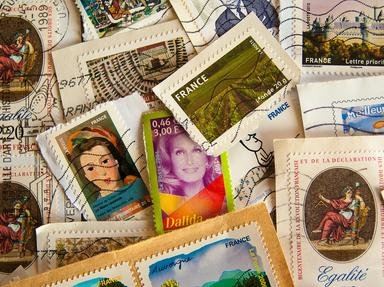Quiz Answer Key and Fun Facts
1. My local stamp dealer strongly advised that I should not pick up or handle stamps with my bare fingers. What's the name of the small stainless steel duckbilled grabbing and holding device that he recommended?
2. Most of the stamps I have come across have small regularly spaced teeth along 2, 3, or 4 of the edges. What is the standard accepted philately term for these teeth?
3. Looking through an assortment of stamps, I found a few that had no perforation teeth at all. What would be the philatelic term for this phenomena?
4. On the side of many of my unused mint stamps, there is a shiny substance that, when wetted, allows the stamps to be affixed to an envelope, package, or virtually any kind of paper. What is this shiny stuff called?
5. Another U.S. stamp that I found in my assortment had perforation teeth on the left and right side. What kind of stamp is this?
6. Some collectors like to collect the entire envelope that has gone through the mails. Philatelists have a name for these. What is it?
7. My friend showed me a cover that was marked, "First Flight". What does this mean?
8. I often see images of a 24˘ US Postage Airmail stamp depicting an airplane flying upside down. This stamp is obviously a what?
9. Looking again through my assortment of stamps, I found an old pair of attached imperforate stamps, where one of the stamps was printed upside-down compared to the other, with the face of the woman depicted is facing away from the other. What kind of stamp pair is this?
10. Upon examining the back or gum side of a British stamp, I observed a faint image of a crown and letters. This image does not appear on the image printed on the face of the stamp, so what is it?
Source: Author
zombipi
This quiz was reviewed by FunTrivia editor
ozzz2002 before going online.
Any errors found in FunTrivia content are routinely corrected through our feedback system.
